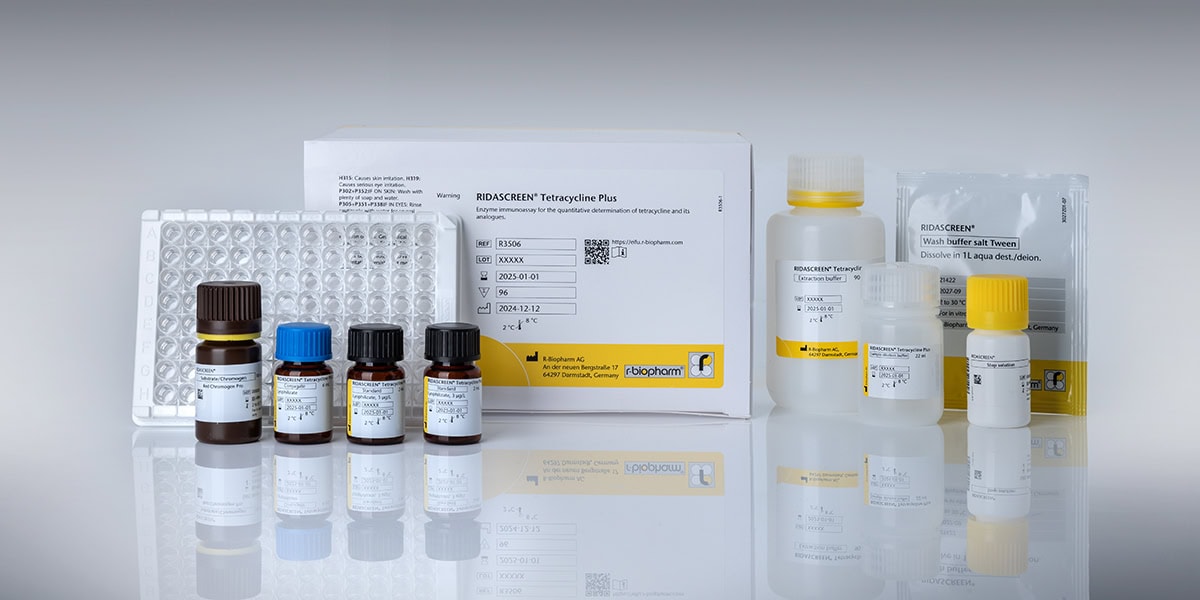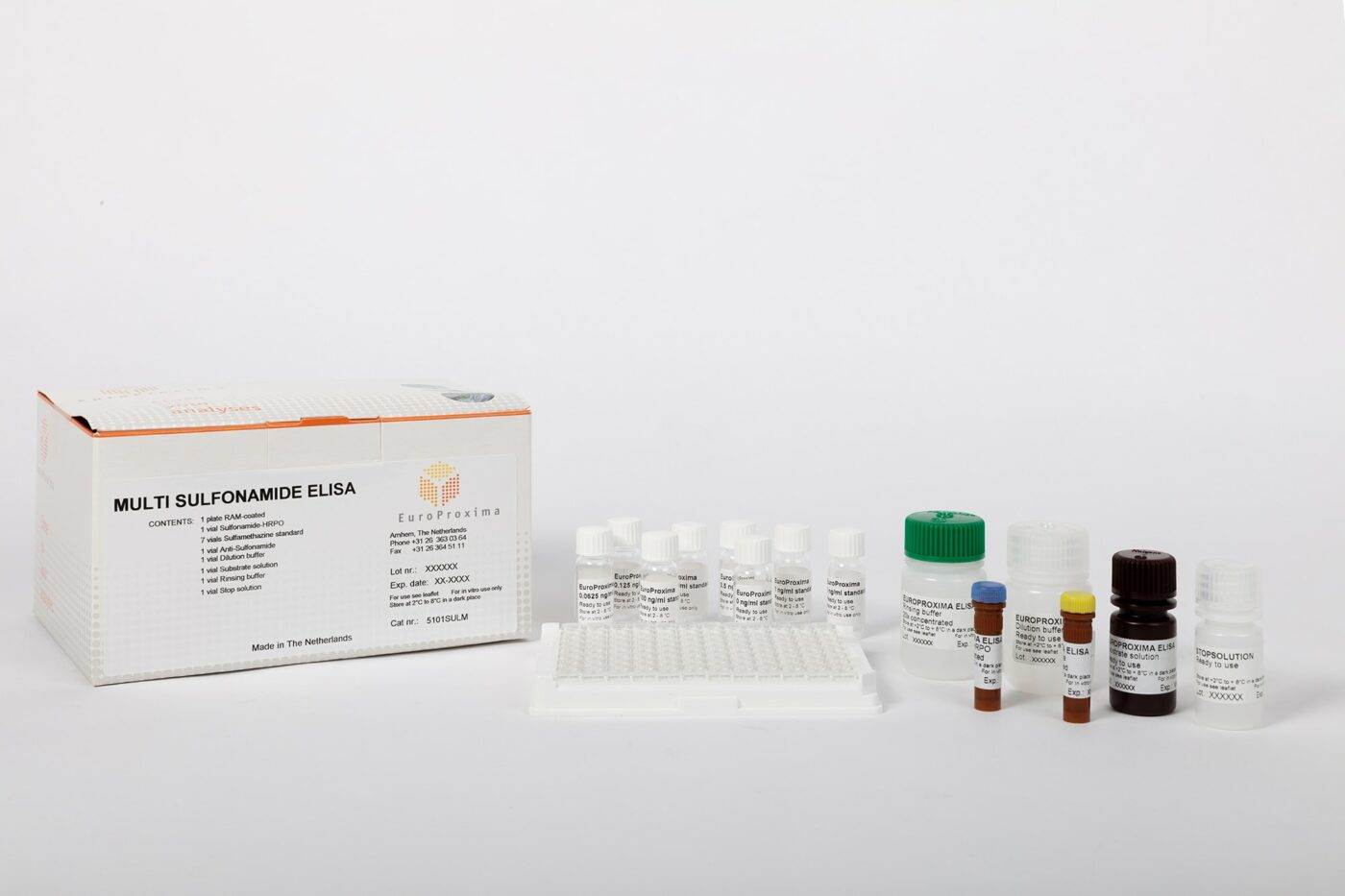
Recent news in Food & Feed Analysis
- Home
- /
- Improve your screening for...
Improve your screening for antibiotics with the new EuroProxima Florfenicol ELISA

The use of the broad-spectrum antibiotic Chloramphenicol (CAP) is totally banned world-wide since many years. As an alternative substance, Florfenicol is widely used, mainly in veterinary medicine. For this less toxic antibiotic Maximum Residue Levels (MRLs) are established by the European Union, varying from 100 to 3000 ppb, depending on the matrix.
Florfenicol is brought on the market under various brand names and is used to control infections in cattle, pigs, poultry and aquaculture. The compound is an effective broad-spectrum antibiotic and although it is less toxic as chloramphenicol, residues of it can lead to aplastic anaemia in humans. Legislation for this drug is in force in the European Union and MRLs are set for several matrices. The drug is not permitted for use in animals from which eggs or milk is produced for human consumption. The awareness for the possible risks caused by residues of this drug was triggered in 2013, when a brand of supermarket eggs was found to be contaminated in Taiwan. [Lee I-chia (8 January 2013). “Survey suggests certain eggs may be dangerous”. Taipei Times. Retrieved 3 November 2014].
In the European legislation the MRLs are described as: „the sum of florfenicol and its metabolites measured as florfenicol-amine“. The reason for this is that florfenicol is rapidly metabolised in the liver of an animal and that this metabolite is the most suitable target for residue screening.
EuroProxima has developed an ELISA test for the quantitative measurement of florfenicol-amine in fish, kidney, liver, milk and egg. The test is a competitive immunoassay in a 96 well microplate (12 strips of 8 wells). Free florfenicol-amine from a sample and a florfenicol-amine conjugate compete for the specific antibodies bound on the plate. After an incubation step of 1 hour, the non-bound reagents are removed in a washing step. The amount of bound florfenicol is visualized by adding a substrate/chromogen solution.[mk_mini_callout button_text=”sales@r-biopharm.de” button_url=”mailto:sales@r-biopharm.de”]For more information about the Florfenicol-amine ELISA, please contact us at[/mk_mini_callout]



